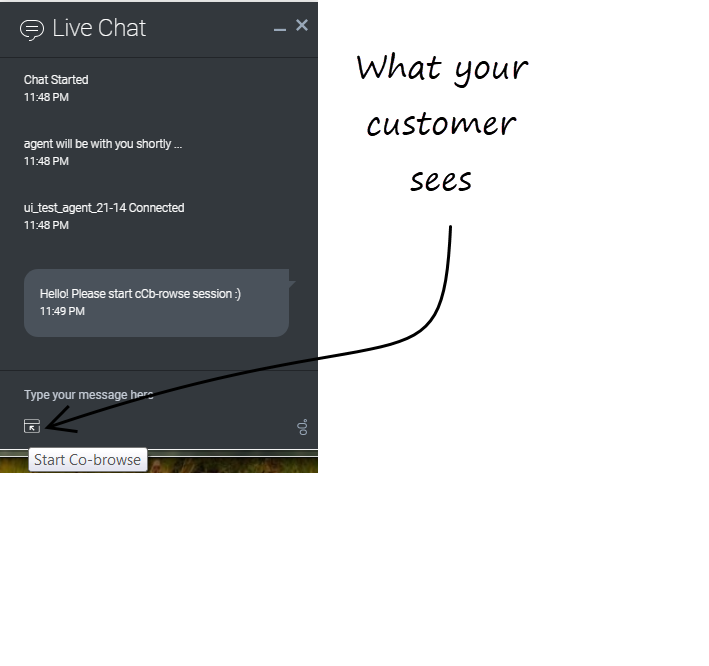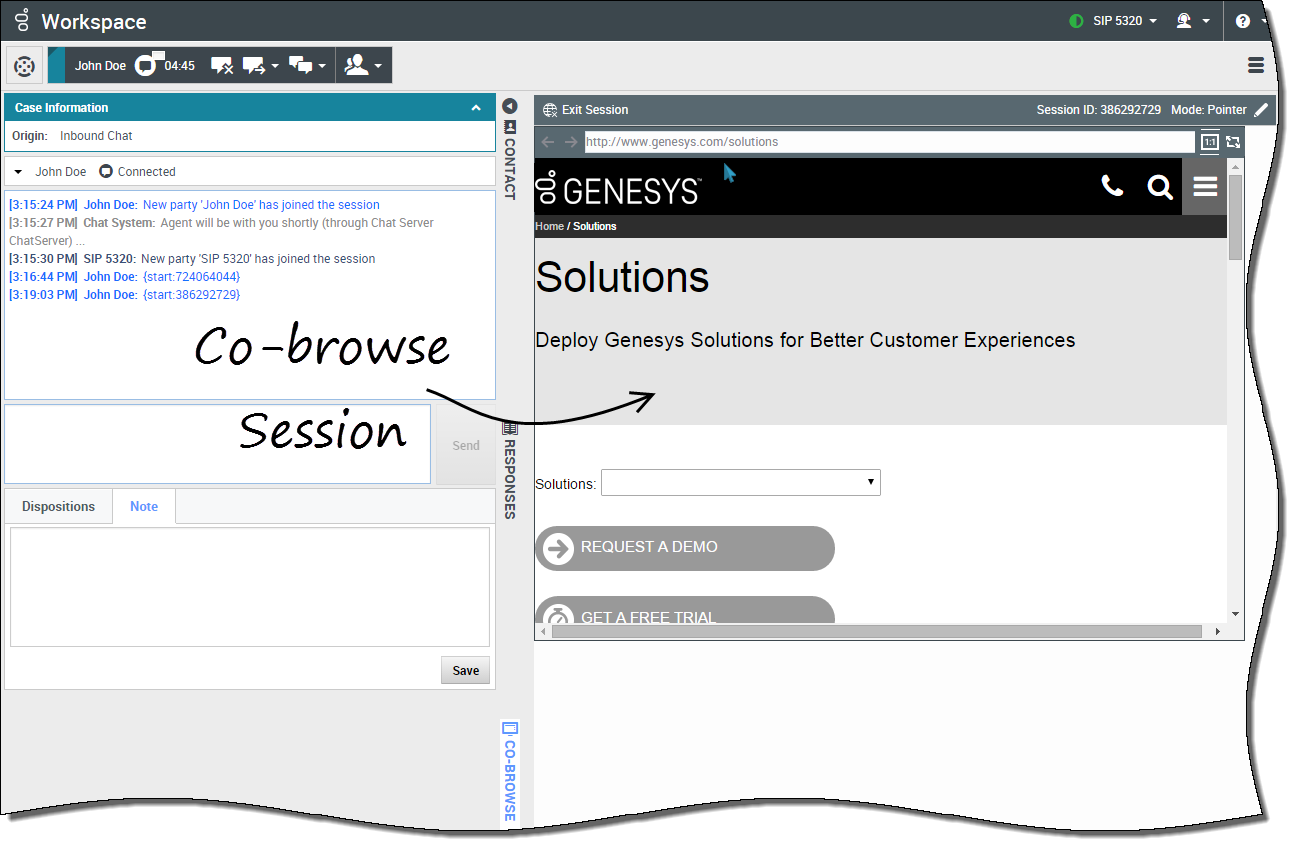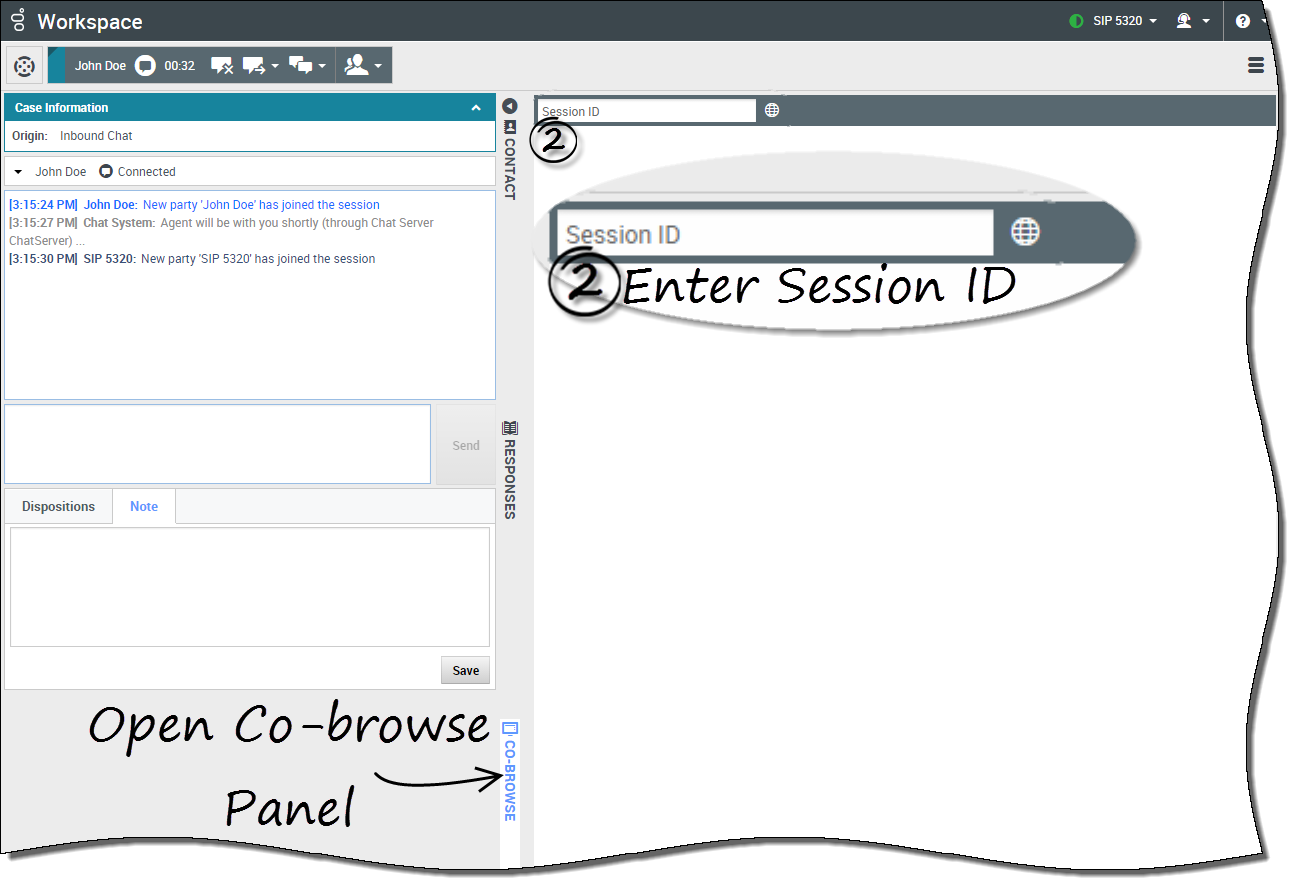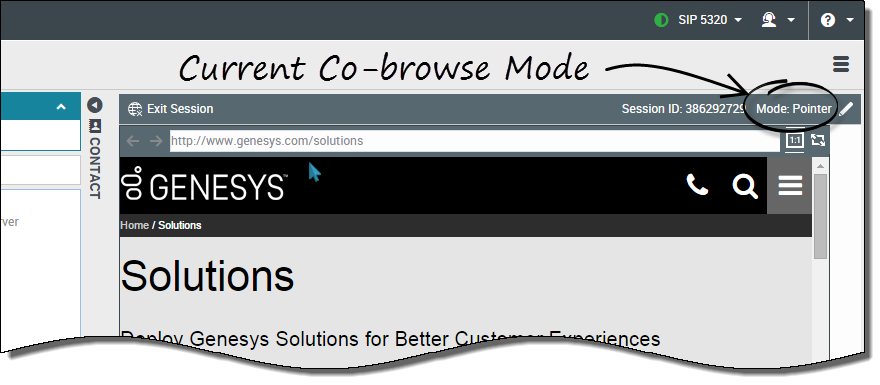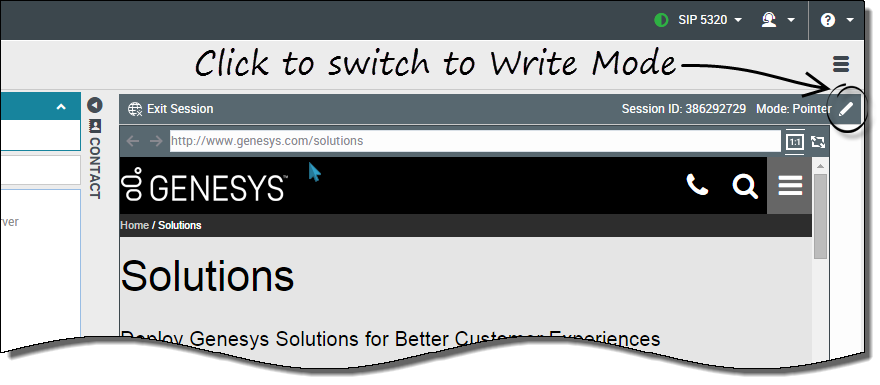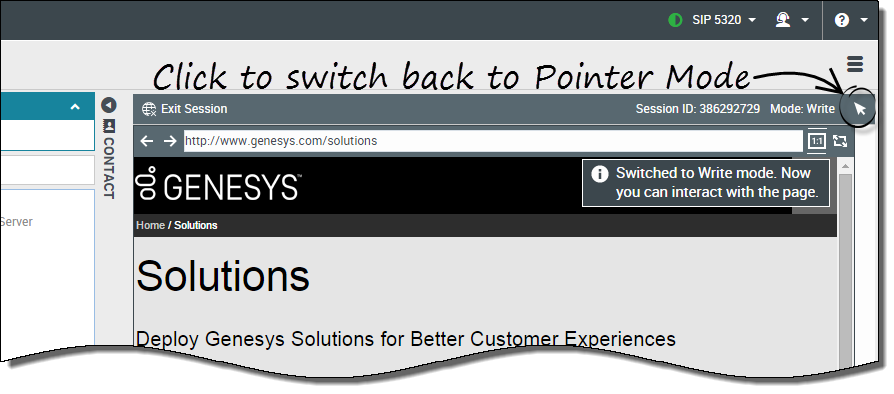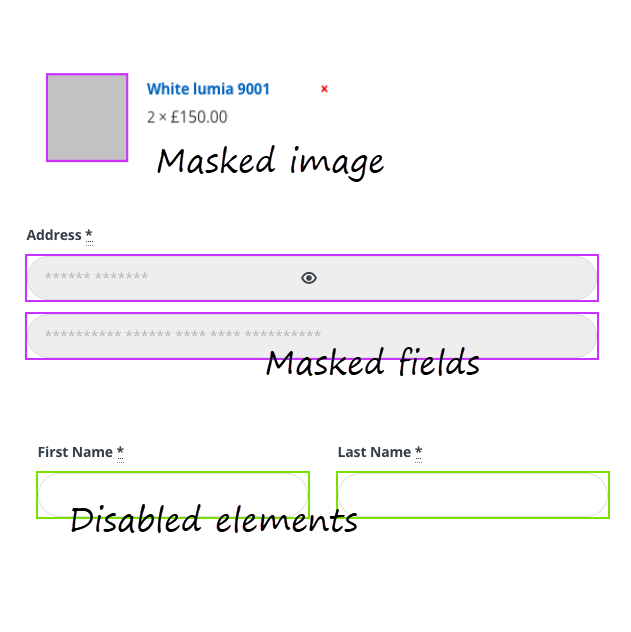Co-browse sessions (v8)
A Genesys Co-browse session lets you and a customer navigate the same web page at the same time. Unlike conventional screen-sharing applications where one party sees an image of the other party's browser, in a Genesys Co-browse session both you and the customer share the same instance of the web page.
Contents
Start a Co-browse session
The customer must initiate a Co-browsing session. You cannot start a Co-browse session. Websites set up for Genesys Co-browse include a widget with a Start Co-browse button that the customer must click to start a Co-browsing session.
One of the widgets that your customer sees might look something like this. Clicking the Start Co-browse button will present the customer with a session ID.
If you are engaged in a chat with the customer, the Co-browse session will automatically start in your desktop. Once the Co-browsing session starts, you see a special message in chat—{start:123123123} for example, where 123123123 is the session ID.
You can only have one Co-browse session open at a time (regardless of how many chat sessions you might be handling).
Start a Co-browse session using a session ID
If you are on a call or a chat and your Co-browse session does not automatically start, you can use a session ID to start a Co-browsing session.
Get the session ID from the customer and enter it in the Session ID field, then click the globe icon.
You should now see the customer's browser. You do not need to navigate to the same page as the customer. Co-browse uses the session ID to make sure that you and the customer are viewing the same page. As soon as the session starts, the customer receives a notification on their screen that they have started a Co-browsing session.
Use Pointer Mode
When you first join a Co-browse session, you are in Pointer Mode. You can see what the customer sees but you cannot perform any actions in their browser. You cannot navigate, input information, or submit forms.
You and the customer can see each other's mouse movements at all times and your mouse clicks create a red circle effect around your mouse pointer. Use the red circle effect to direct the customer to specific sections on the web page.
At any time, you can send a request to the customer to enable Write Mode.
Switch to Write Mode
In Write Mode, both you and the customer can perform conventional user actions. Both of you can enter text and click buttons.
To switch to Write Mode, click the pencil icon at the top right corner of the Co-browse area. The customer is asked to approve the switch to Write Mode. Write Mode is enabled only if the customer approves. You receive a notification about the customer's response.
If the customer approves the switch to Write Mode, the pencil icon turns into a pointer icon.
Tip: If Write Mode is disabled by administrators, you will not see the pencil icon.
- Click the back and forward arrows.
- Type a URL into the URL bar and press Enter.
- Click Refresh to reload the page.
Administrators can limit which interactive elements are enabled for you in Write Mode.
You can only co-browse while the customer is on your company's site. If the customer goes to another site, the co-browse session stops until they come back to your site.
Switch back to Pointer Mode
To switch back to Pointer Mode, click the pointer icon at the top right corner of the Co-browse area.
The customer can also switch back to Pointer Mode at any time.
Stop a Co-browse session
Once a Co-browse session starts, both you and the customer have the ability to end the session with the Exit Session button. Ending your ongoing chat or call with the customer also immediately ends the Co-browsing session.
If the customer exits the session, you are notified and your browser no longer displays a view of the customer's browser. Likewise, if you exit the session, the customer receives a notification. Exiting the Co-browse session does not end your related chat or call with the customer.
Manage your virtual browser
The size of your virtual browser (a window on your computer that displays the customer's browser window) matches the actual size at the customer's end. Scroll bars appear to help you navigate the customer's browser if their window is bigger than your Agent Desktop Co-browse area. Or, you can use the zoom-to-fit button to scale the display to fit in your window.
Visibility of sensitive data
Administrators can limit which fields are readable to you; asterisks (****) display anywhere that characters are masked. For example, administrators might choose to mask only the customer's password and social security number—or an entire page—from all agents. Images can also be masked from you and will display as a grayed out area. Both masked fields and images are surrounded with a purple border.
At the same time, control for some elements, like buttons or links, can be disabled. These disabled elements are surrounded with a green border. By default, all Submit buttons are deactivated for agents. If you click on a Submit button, nothing happens. The customer always has permission to submit any web forms, just as they would while browsing normally.

